Approximately 10,000 lead industry sites are estimated to survive in England, spanning nearly three millennia of mining history from the later Bronze Age (c.1000 BC) until the present day, though before the Roman period it is likely to have been on a small scale.
Two hundred and fifty one lead industry sites, representing approximately 2.5% of the estimated national archaeological resource for the industry, have been identified as being of national importance. This selection of nationally important monuments, compiled and assessed through a comprehensive survey of the lead industry, is designed to represent the industry's chronological depth, technological breadth and regional diversity.
Ore hearth smelt mills were introduced in the 16th century and continued to develop until the late 19th century. They were the normal type of lead smelter until the 18th century, when they were partially replaced by the reverberatory smelt mill.
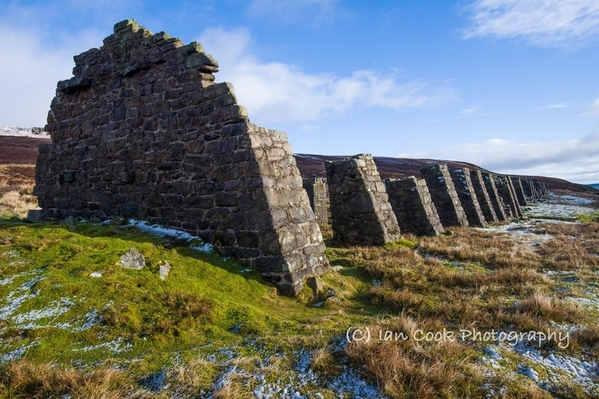
The ore hearth itself consisted of a low open hearth, in which lead ore was mixed with fuel (initially dried wood, later a mixture of peat and coal). An air blast was supplied by bellows, normally operated by a waterwheel; more sophisticated arrangements were used at some 19th century sites. The slags from the ore hearth still contained some lead. This was extracted by resmelting the slags at a higher temperature using charcoal or (later) coke fuel, normally in a separate slag hearth. This was typically within the ore hearth smelt mill, though separate slag mills are known.
Early sites were typically small and simple buildings with one or two hearths, whereas late 18th and 19th century smelt mills were often large complexes containing several ore and slag hearths, roasting furnaces for preparing the ore, refining furnaces for extracting silver from the lead by a process known as cupellation, and reducing furnaces for recovering lead from the residue or litharge produced by cupellation, together with sometimes complex systems of flues, condensers and chimneys for recovering lead from the fumes given off by the various hearths and furnaces.
The ore hearth smelt mill site will also contain fuel stores and other ancillary buildings. Ore hearth smelt mills have existed in and near all the lead mining fields of England, though late 18th and 19th century examples were virtually confined to the Pennines from Yorkshire northwards (and surviving evidence is strongly concentrated in North Yorkshire). It is believed that several hundred examples existed nationally.
The Old Gang smelt mill complex is considered to be one of the best preserved lead smelt mills, and the most structurally complex, in the North Pennines. The buildings were recorded and partly excavated in 1990-91, and buried archaeological deposits will survive.
These include important metallurgical deposits which represent a valuable resource for studying the development of smelting technology during the 19th century. In addition, the peat store formed an integral part of the smelt mill operations and is an important rare survival.
(Peat Store)
Nucleated lead mines are a prominent type of field monument produced by lead mining. They consist of a range of features grouped around the adits (level) and/or shafts of a mine. The simplest examples contain merely a shaft or adit with associated spoil tip, but more complex and generally later examples may include a considerable range of ancilliary features.
The majority of nucleated lead mines also included an ore works, where the mixture of ore and waste rock extracted from the ground was separated (dressed) to form a smeltable concentrate. The majority of nucleated lead mines with ore works are of 18th and 19th century date, earlier mining being normally by rake or hush and including scattered ore dressing features (a hush is a gully or ravine partly excavated by use of a controlled torrent of water to reveal or exploit a vein of mineral ore).
(Upper Old Gang showing hushes and spoil heaps)
The associated hushes and nucleated lead mine at Old Gang survive well and will contribute to our understanding of the range of mining activities which took place in this area during the 19th century. Taken as a whole, the monument at Old Gang is a rare example of a lead mining site which retains evidence for many of the industry's processing techniques. There is a considerable range of documentary material relating to the site's history and its operation and this enhances the value of the monument. It also serves as an important educational resource and public amenity.
The monument includes the structural, earthwork and remains of the Old Gang lead smelt mill complex and associated mining and ore dressing remains and lies on the Mill Gill, a tributary of the River Swale, approximately 6.5km west of Reeth.
(Bridges over the Gill)
The smelt mill complex contains the remains of two surviving mills; the upper mill to the north, on a levelled terrace in the hillside, and the lower mill to the south, on the flood plain of the stream. The upper mill is the older, and is believed to be the mill known from documents as New Mill, constructed in the late 18th century. The lower mill, Old Gang Mill, was constructed in 1846, and incorporated the existing flue system.
This complex worked until at least 1888. The site was reused after the furnace arches had been removed to house machinery for reprocessing waste tips. The New Mill, which includes substantial building remains, has a complex structural history. A flue was built from the smelt mill to a chimney on the hillcrest north of the mill and later extended to a chimney on Healaugh Crag, 686m to the north and involving a climb of over 150m above the mill.
Within the upper mill, the flue, which consists of a largely collapsed drystone arch with turf capping, passes over the remains of two ore hearth arches from an earlier mill phase.
The remains of an additional shorter flue and chimney lie on the lower east side of the main flue and may have been connected to the later slag hearth at the Old Gang (lower) mill. The remains of the upper mill and both sets of flue and chimney are included within the scheduling. The scheduling also includes the remains of the lower mill situated between the upper mill and Mill Gill. The mill, which was built as a direct replacement for the upper mill, uses the same flue system which meant that production was not severely disrupted during the transition.
The lower mill includes a building, measuring 24m long by 10m wide and orientated east to west, which housed four ore hearths. The building contains the remains of the masonry hoods above the hearths. The remains of a wheelpit for powering the bellows mechanism survives in the west end. A small building situated to the east, measuring 6m wide by 7m long, is connected to a separate flue and housed a slag hearth. Another building, situated to the east and measuring 7m wide by 11m long, was known as the Silver House. The building contains a large chimney in the north wall and is considered to have been an assay house.
A partly eroded slag tip is visible south east of the main complex. The entire smelt mill complex and flue system is Listed Grade II. The smelt mill required a considerable quantity of fuel in the form of peat cut from the surrounding moorland. Peat was only cut during June and thus a year's supply would have to be cut and housed in dry conditions. The volume of peat required at Old Gang is reflected in the size of the peat store building. This building is included in the scheduling and is Listed Grade II.
(The Peat Store)
The building measures, 6.4m wide by 120m long, is situated on a level terrace north west of the dressing floor. The walls consist of 36 individual stone piers, the whole divided into three bays by two internal partition walls. In the eastern part of the site are the remains of three hushes. These are approximately 15m-25m wide and follow the line of the veins, generally aligned north west to south east. Numerous shafts are located along the bottom of the hushes, along the sides and at the upslope ends.
Much of the later mining operations were carried out from levels driven as crosscuts or directly on the vein, and at least four levels are known to survive. The most notable level entrance is Spence Level, situated at the south end of the easternmost hush, which consists of a narrow arch 1.32m wide by 1.75m high, and Hard Level, measuring approximately 1.3m wide by 1.7m high, which has a rectangular portal with a slab roof.
Mine spoil from Hard Level was transported eastwards across a single span bridge, measuring 3m wide by 8m long, to an extensive spoil tip almost 500m long on the south side of Mill Gill. To the south of the Gill are the remains of two levels and a small miner's hut, measuring approximately 4.2m wide by 4.4m long. The bridge and these southern features are included in the scheduling. The site also includes the remains of an ore dressing works built to dress the ore from Hard Level.
The dressing floor is situated south east of Hard Level and replaced small ore dressing areas on the fells which are not included in the scheduling. In 1887 the dressing floor is recorded as including a waterwheel, dolly tubs, and numerous buddles, including three trunk buddles. The dressing floors are partly overlain by spoil and dressing waste though a number of structures are still visible. These include the bouseteams in the north west corner, which are 20m long and contain six bays where visible, a wheel pit measuring 2.5m wide by 7.5m long (externally), timber settling tanks and a series of revetment walls. The floors also include the ruins of a two roomed building measuring 4.6m wide by 7.2m long.
The remains of a water management system which served the smelt mills and the dressing floor are also included in the scheduling. This consists of four dams and a series of leats. The most substantial dam is situated west of the smelt mill flue and consists of an earthen bank 13m wide by 1.8m high. The dam and pond area behind measure approximately 15m-20m wide by 57m long, and no longer holds water.
For a list of Ian Cook's photography and TravelGumbo contributions, please click on this link

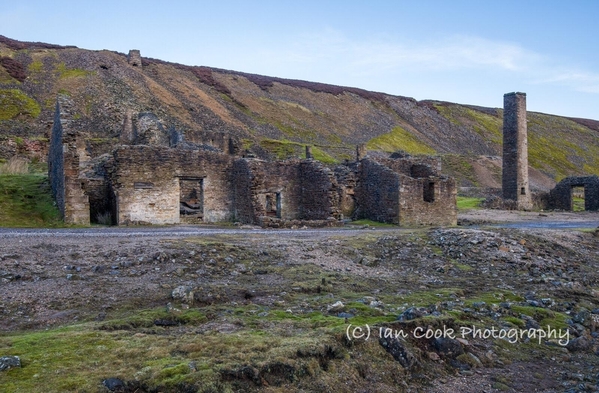
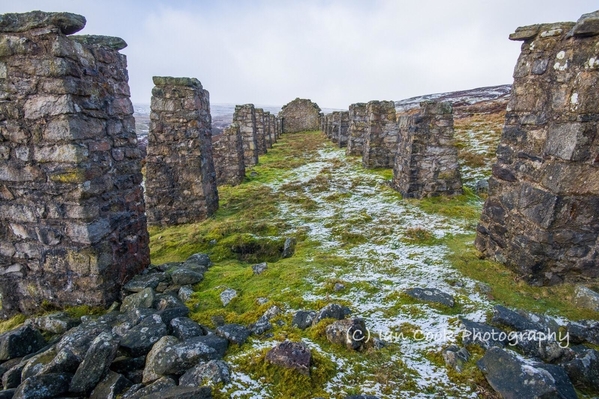
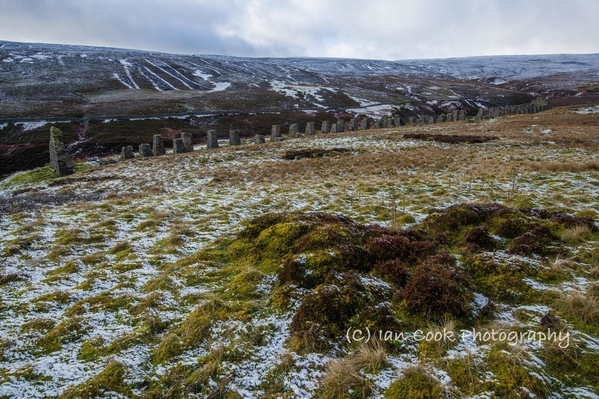
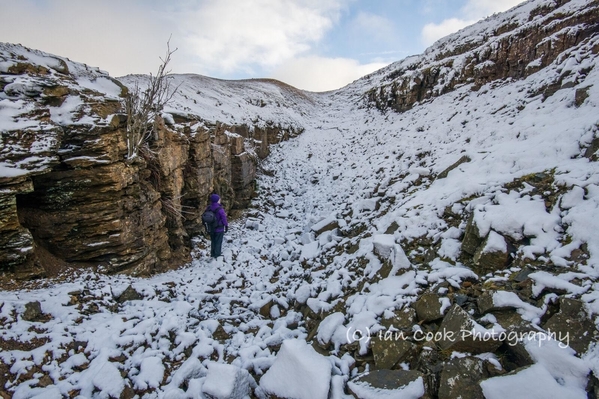

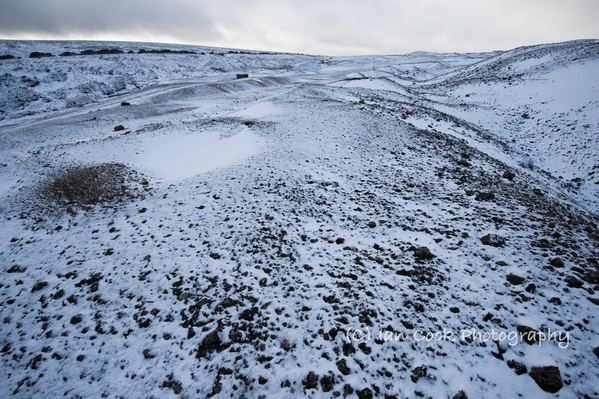
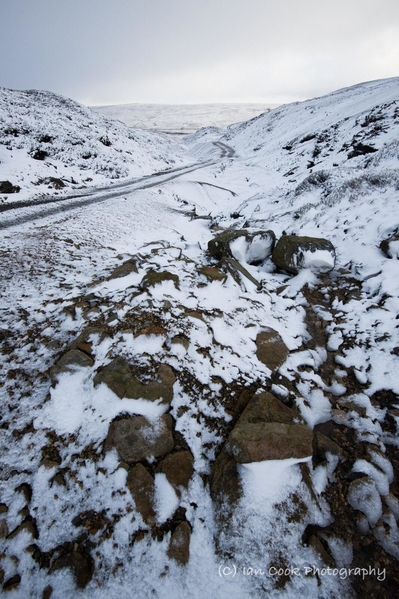
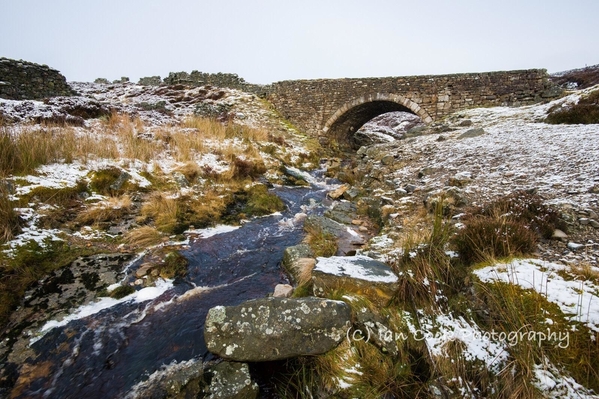

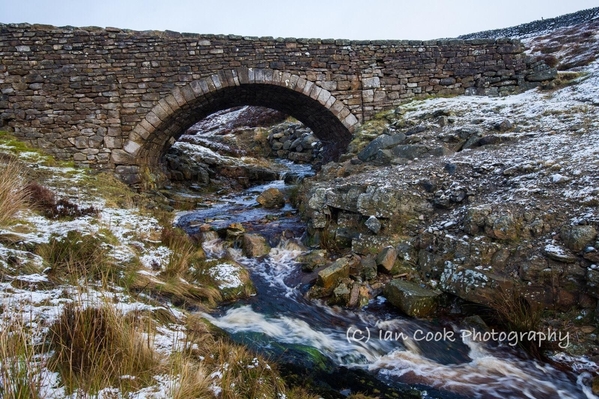
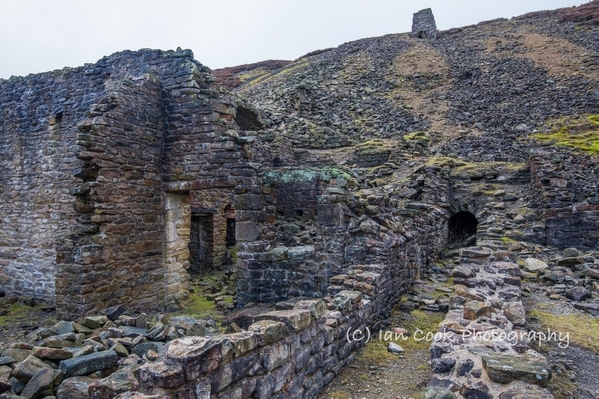
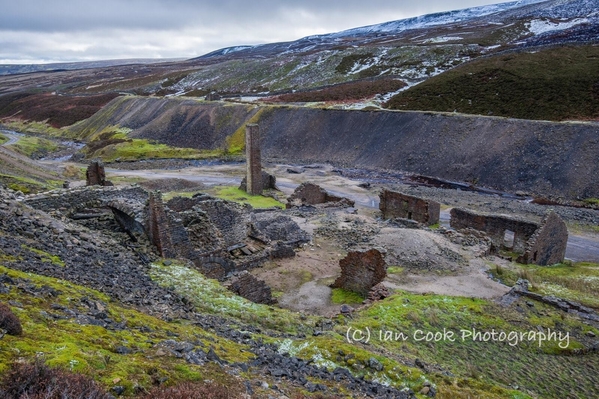
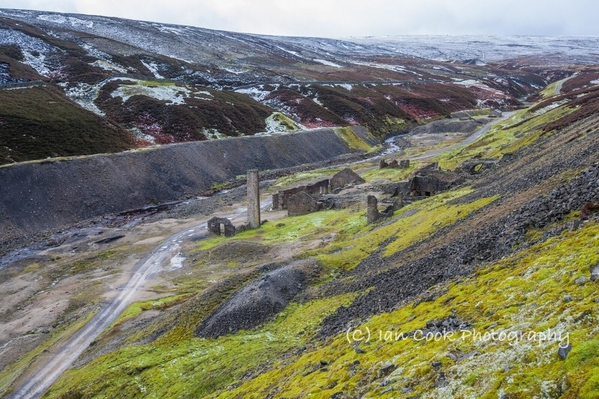
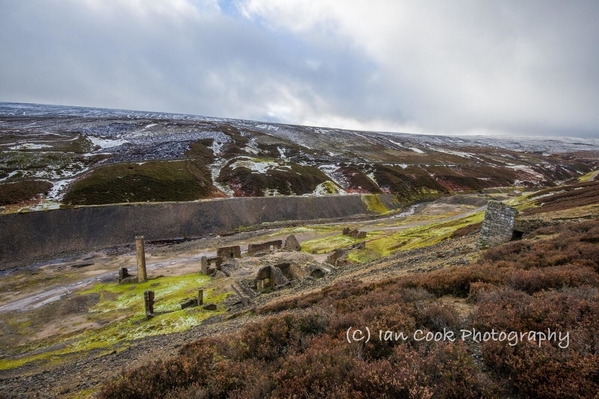
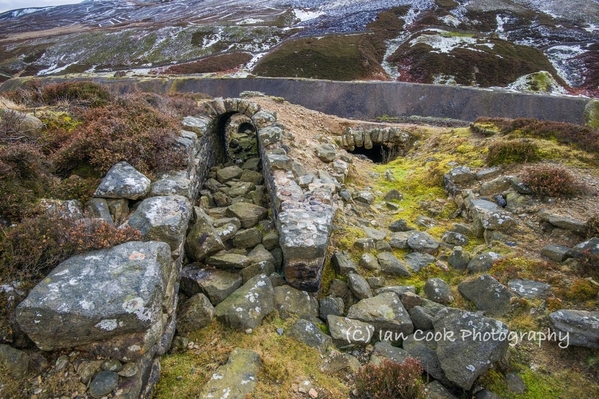
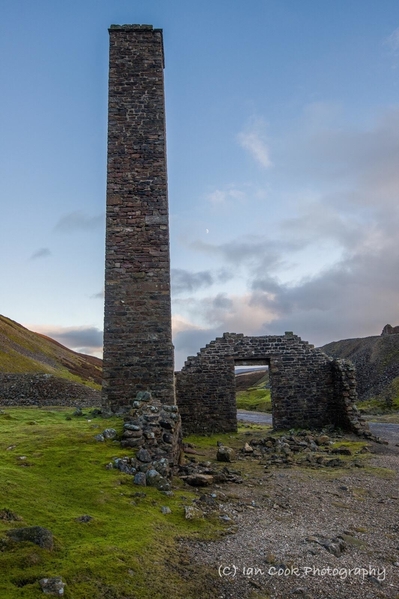
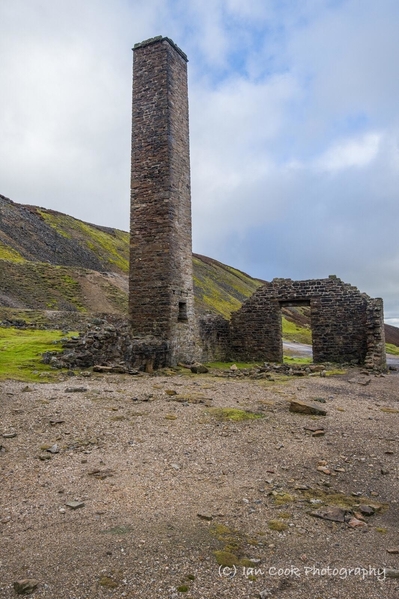
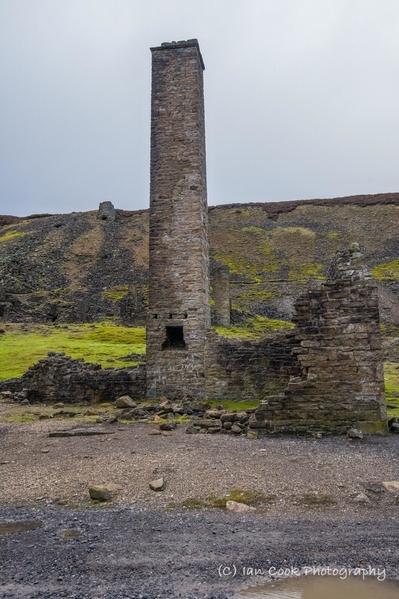
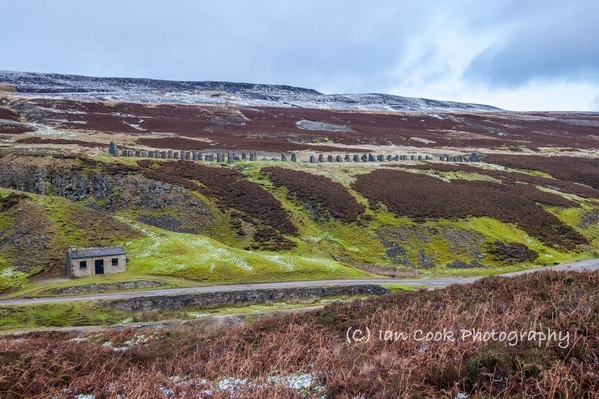
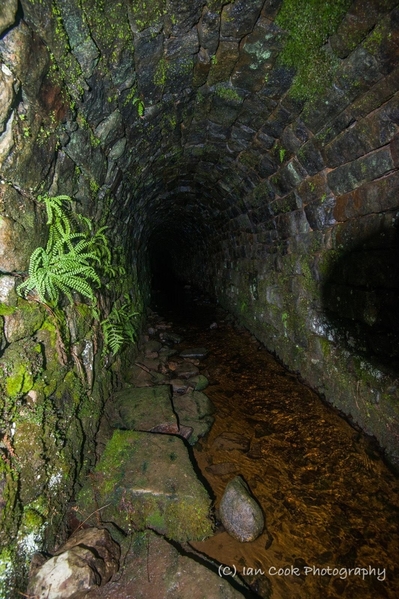
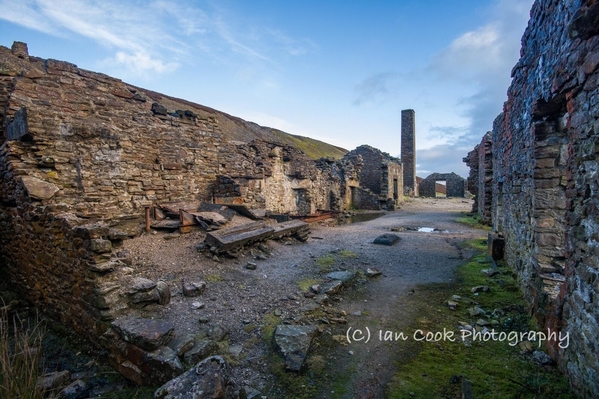
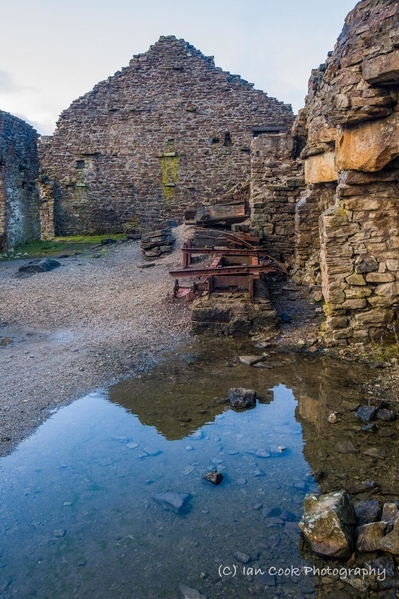
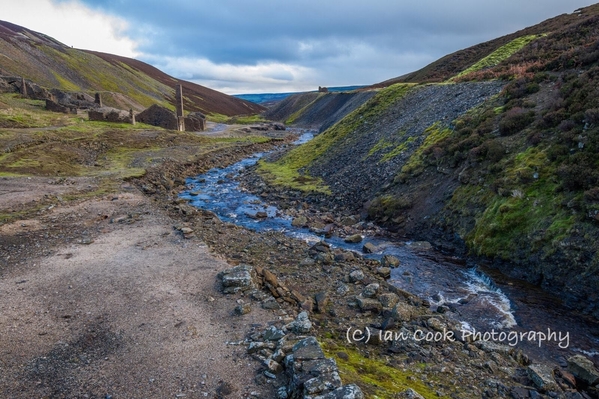
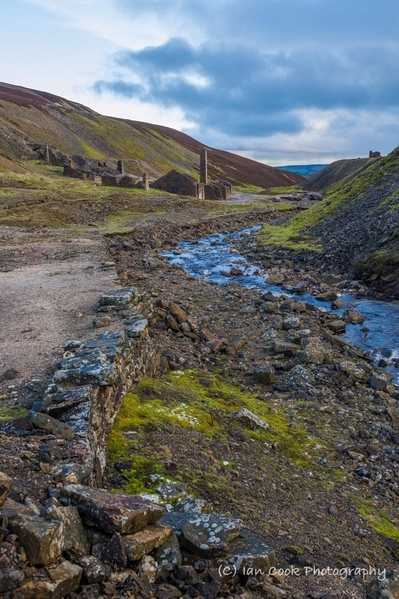


























Comments (0)